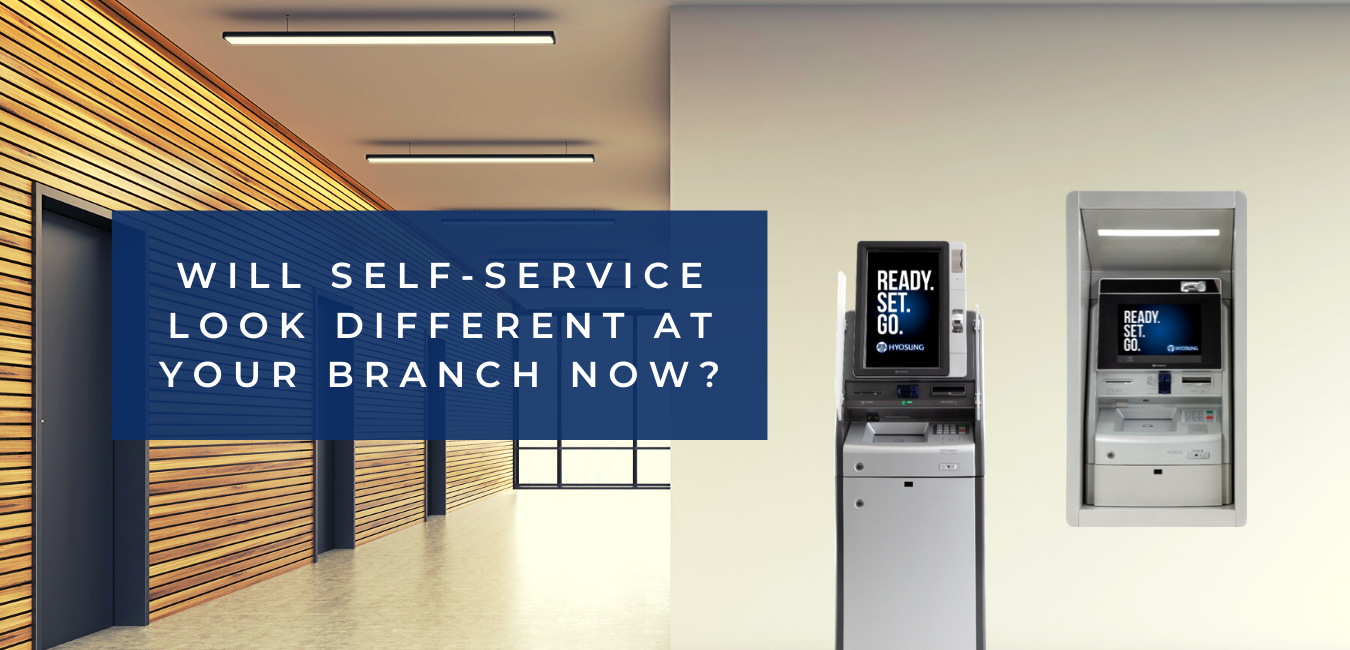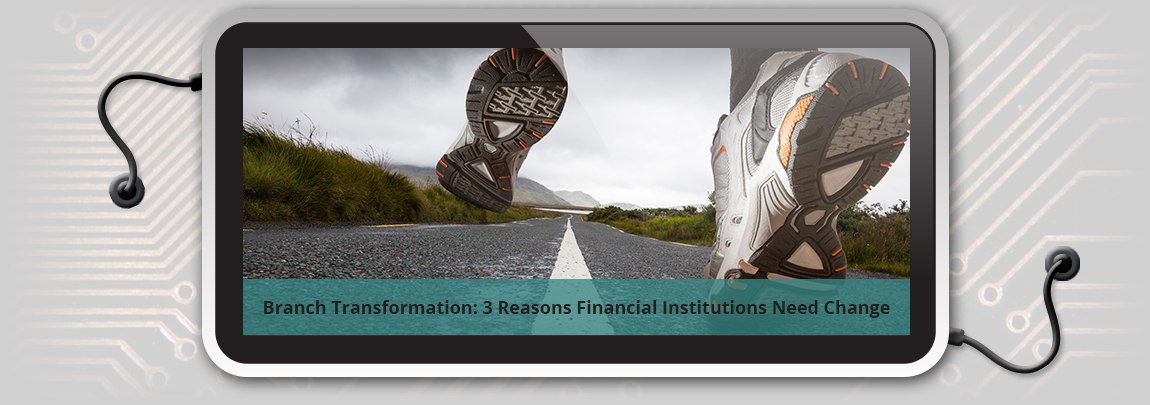What Will Happen In The Branch In 2020 And Beyond
As states re-open in some form or fashion in the coming weeks, many Financial Institutions are faced with the new reality of what to do with the...
3 min read
 Todd Gray
:
May 18, 2020 2:35:33 PM
Todd Gray
:
May 18, 2020 2:35:33 PM
.png)
Consumer behavior has dramatically changed in the past few weeks and I don’t have to look far to witness real world examples. My 74-year-old mom has become a wiz ordering Uber Eats and navigates Zoom like a pro now to play bridge with her friends.
My 4-year-old niece has become dramatically more self-sufficient since both parents are working remote. She is now making herself snacks and attending virtual ballet classes and school reading sessions via Zoom.
Fact is, COVID has forced us to adapt our behavior regardless of age, gender, and/or location, and whether we like it or not, this modification is the new normal. Industries and businesses that learn from COVID to adapt to change will be the winners in a post-COVID world.
Question for financial institutions is, what is the price of status quo? What is the cost of not meeting customers/members post-COVID expectations?
Like many businesses, traditional financial institutions have experienced a massive transformation in just a few short weeks. Pre-COVID, many of us were forced to go inside a branch for the simplest of transactions such as cashing a check, depositing cash, or getting a change order for our business.
With most staff sent home in the name of safety and branch lobbies closed for basic transactions, institutions have relied on drive-thru lanes, self-service ATMs/ITMs, mobile and online banking to service customers/members.
For more complex financial needs, some institutions have offered branch access via appointment only. This abrupt change to long standing and outdated business models has challenged back office operating systems, credit risk models, mobile and online banking capacity, and outdated security protocols.
For more innovative institutions that have embraced technology and focused on modern consumer preferences and enhanced experiences in line with leading retailers, the pandemic has proven much less disruptive.
However, for old school banks and credit unions that have long shunned changes to front and back office systems, COVID-19 is a wake-up call. Institutions that have failed to implement automation and self-service technology because “my customer is not smart enough, too rural, or too old” have been exposed. Read more about this in our blog, "What Will Happen In The Branch In 2020 And Beyond."
If COVID-19 has proven anything, it is that consumers of all ages and income brackets will adapt, embrace new technologies, and shift long standing behaviors.
COVID will force significant investments and a change in thinking - status quo is no longer acceptable. Consumers and small business owners will expect a safe and modern banking experience, in line with modern retailers such as Apple, Amazon, and Starbucks.
They will expect options – to bank when I want and how I want. Options such as self-service full function ITMs connected to the core to conduct everyday transactions (i.e. cashing checks to the penny, paying credit cards, etc.)
Small business owners accessing an ITM to quickly make change orders outside traditional banking hours.
Aspiring home buyers connecting to their mortgage specialists via mobile video applications like POPio – a safe and modern banking experience is not an option, it’s the new normal.
While upfront implementation costs can be expensive, significant savings can be recognized by simply automating mundane transactions.
Given the industry average is ~$4.50 per transaction in-branch via a teller versus $0.50 via ATM/ITM, this equates to an 85% cost reduction!
With ~90% of transactions typically done by a teller available via self-service ITM, fewer tellers are required, affording reductions in FTE. Or, existing staff can simply be redeployed elsewhere.
By optimizing staffing levels, streamlining inefficient processes, automating mundane transactions, and creating new sales opportunities from a more relationship driven model (i.e. Universal Banker), significant long-term ROI is achieved. Check out our ITM buying to learn more here.
A great success story is our partner, Five Star Credit Union, which achieved $240,000 in FTE savings in the first 8 months post-ITM install!
And for institutions that have failed to implement automation and self-service technology because “my customer is not smart enough, too rural, or too old,” then this case study is for you.
In summary, COVID-19 has taught us that old dogs can be taught new tricks and people are smarter and more open to change than we give them credit.
Consumers of all ages and income brackets have proven amiable to new technologies and open to amending long-standing behaviors. Question is, will financial institution executives be as open to embracing new processes and technology as its customers and members?
And if my bank or credit union continues to operate the same as before – forcing me inside the branch to deposit cash or sit in a long, slow moving drive through line during inconvenient hours to cash a check – will I move my account to a competitor that innovated and lets me bank how and when I want to bank?
If you are an executive in need of a strategic partner knowledgeable in best practices of change and successfully implementing automation and self-service technology, give QDS a call!

As states re-open in some form or fashion in the coming weeks, many Financial Institutions are faced with the new reality of what to do with the...

When it comes to branch transformation, putting all the pieces together can be a lot like working a jigsaw puzzle. First, you start with a finished...

Remember the good old days before the Great Recession when revenues and profits were sky high and nothing could go wrong? Well, unfortunately those...